Interview with David S. Arthur, author of 'Shaytan: A Journey Into Evil"
David S. Arthur is an American
novelist with a taste for international adventure and ancient history. THE
KINGDOM OF KEFTIU: A MYSTERY OF THE ANCIENT WORLD was David’s first book to
feature English historical sleuth, Richard Quizzenbury and his feisty wife,
Emily. It is an archaeological adventure set in the Greek islands. His new
novel, SHAYTAN–A
JOURNEY INTO EVIL, continues the
Quizzenbury Adventure series.
Before focusing on fiction writing, David
enjoyed a long and rewarding career as a writer, producer, and director of
hundreds of film and digital video presentations, theatrical performances,
concerts, and large scale audience events. David currently lives in Santa Fe,
New Mexico.
For
More Information
- Visit David S. Arthur’s website.
- Connect with David on Facebook and Twitter.
- Find out more about David at Goodreads.
- Contact David.
About the Book:
India – 1947. In the heart of the jungle, death
stalks the night. The authorities claim it is a man-eating leopard. The natives
believe it is something far more terrifying—a creature that by day wears the
skin of a man, but when craving human flesh becomes the demon…SHAYTAN! While on expedition to India, historical sleuth Richard Quizzenbury and
his wife, Emily, suddenly find themselves on the hunt for a killer.
For his action-packed new thriller, SHAYTAN–A
JOURNEY INTO EVIL, Santa Fe novelist David S. Arthur combines
adventure, mysticism, and history to transport his readers into a world in which time marches to the pulse of the cosmos;
where the spiritual and the supernatural merge and reality shares equal footing
with illusion.
Fans of SHAYTAN–A JOURNEY INTO EVIL are already expressing
excitement and fascination for the new book, among them Tom Wright, prominent
American film and television director (NCIS, Supernatural,
Castle). “Man you really get into it! The cobra scene scared the @#$%
out of me. This is Spielberg on steroids.”
Seeking relief from the devastation of post-war
Britain, Richard and Emily Quizzenbury embark on a
tour of India. They plan to initially
spend a week in Bombay with Richard’s old Oxford
chum, Victor Bloodworth, after which they
will satisfy their appetite for adventure by exploring historical sites throughout
the Indian subcontinent.
On their first night in
Bombay, Victor informs the Quizzenburys that he has been asked to undertake the
hunt for a man-eating leopard that has been terrorizing the inhabitants in a
remote
area of the Indian Central Provinces. Victor is the illegitimate son of a wealthy Englishman, now deceased, who was by trade a legendary big game hunter. While Victor has long since rejected his father’s brutal profession, he is himself a skilled hunter and reveals his intent to help the people who are being threatened by the leopard. Although the villagers of the region believe the man-eater is a demon that they call Shaytan, Victor is convinced the leopard is actually being forced to prey on humans due to injury or old age. He wants to capture the animal alive and relocate it to a zoo for scientific study.
area of the Indian Central Provinces. Victor is the illegitimate son of a wealthy Englishman, now deceased, who was by trade a legendary big game hunter. While Victor has long since rejected his father’s brutal profession, he is himself a skilled hunter and reveals his intent to help the people who are being threatened by the leopard. Although the villagers of the region believe the man-eater is a demon that they call Shaytan, Victor is convinced the leopard is actually being forced to prey on humans due to injury or old age. He wants to capture the animal alive and relocate it to a zoo for scientific study.
Quite unexpectedly, Victor
invites the Quizzenburys to accompany him on the hunt, explaining that his
uncle and spiritual mentor, Ashok Kahn of the Forest
Guard, will join them as an expert Shikari guide. The Quizzenburys reluctantly agree, hoping Victor will be able to capture
the beast as quickly as he anticipates, so they can be free to pursue
their travels. However, the hunt for the leopard soon
escalates into a terrifying struggle for survival during which many innocent lives are lost, as the hunters – and
the Quizzenburys – become the hunted.
“Shaytan is far more than just a
jungle adventure,” Arthur insists. “It is about the ageless conflict between
good and evil, the ruthless march of empires, the
rise of the world’s great religions, the discovery of the New World, the laying
of this century’s geo-political foundations, and the establishment of
hostilities that are today’s headlines. And India was the epicenter of it all.”
According to Arthur, for
Richard Quizzenbury – who is never without his books – the expedition becomes a quest for truth, which is his passion – the truth about
history and religion and science – the truth behind our darkest nature as a
species and our most primal fears and beliefs.
“For Victor it
is far more personal,” Arthur explains. “Victor is half English, half Indian –
with a Hindu background. He is haunted by the memory of his mother’s murder
when he was a child, his father’s apathy toward him growing up, his bi-racial
heritage and his uncertainty about his faith. His Uncle Ashok’s presence brings
these conflicts to the fore. Through
their daily prayers and rituals invoking the ancient gods to guide and assist
them, Victor’s search for personal redemption transcends the hunt; plunging him
into the arcane realm of Vedic (Hindu) mysticism, in which the Hindu deities play a deciding hand in his life or death
battle against the beast.”
As a writer, Arthur enjoys peeling back the layers
of history, digging up the past, searching for answers to ancient riddles. “My intention is to
entertain by taking my readers to exotic places they may never go and revealing
things they might never know. In short, I write for the thrill of discovery,
and I want my readers to share that experience.”
For More Information
- Shaytan: A Journey Into Evil is available at Amazon.
- Pick up your copy at Barnes & Noble.
- Discuss this book at PUYB Virtual Book Club at Goodreads.
Welcome to The Writer's
Life! Now that your book has been published, we’d love to find out more
about the process. Can we begin by having you take us at the
beginning? Where did you come up with the idea to write your book, Shaytan:
A Journey Into Evil?
David: First let me explain, Shaytan is a story about the hunt for a man-eating leopard, set in India in 1947. While touring the ancient monuments, British explorers Richard and Emily Quizzenbury unexpectedly find themselves involved in the hunt for this man-eater as the guests of Victor Bloodworth, an expert marksman of Anglo-Indian descent. During the course of events, the hunters become the hunted. But that was not always the scenario, nor these the characters.You see, Shaytan was actually decades in the making. And I am not a slow writer.It all began as a screenplay in 1977-78 while I was living in Los Angeles. Back then it was a story about a tiger and the title was The Man-Eater of Nepal. Over the years, I have picked and prodded at the idea but my producing and directing career (aka earning a living) always took precedent. In 1997, during a production lull, I rewrote the screenplay and re-titled it Shaitan – an Arabic term meaning demon. It was then that the tiger evolved to a leopard and I introduced the Vedic influences and superstitions that so dramatically shape the book. Many monsoons later in 2011, with the publication of The Kingdom of Keftiu, my first Quizzenbury adventure, I came to realize Shaytan could be a perfect vehicle for a Quizzenbury sequel.As far as the genesis of the original concept, I grew up hunting like most kids in Texas (birds, rabbits, frogs, snakes etc.) and reading about real hunters of dangerous game. One in particular caught my fancy – a man named Jim Corbett, an employee of the Bengal and North Western Railway who had a thrilling career (1907 to 1938) stalking and killing some 33 Indian man-eaters – mostly tigers – but two leopards. I guess I wanted to write about that kind of adventure. In Shaytan I have incorporated passages of Corbett’s actual book, The Man-Eating Leopard of Rudraprayag, by having Emily Quizzenbury reading it during the hunting expedition and commenting about it in her diary. This was intended to authenticate the incredibly deadly and terrifying behavior of these jungle predators and in that way heighten the believability and the horror factor of my own jungle tale. [This is a technique I first employed in Keftiu, using a real scientific monograph from 1879 – Santorin et ses eruptions – by Ferdinand Fouque (a French geologist) as a form of validation for certain geologic scenarios presented in my novel – providing the voice of an expert witness. ]Anyway, having decided in 2011 that Shaytan was to become a novel and the Quizzenburys were India bound, I spent four years engulfed in the history of the South Asian subcontinent (India), researching its pivotal four thousand year role in world events, digesting the evolution and minutiae of Hinduism (aka Vedic lore and superstition – its gods and demons) and incorporating all of it into the characters and plot of the hunt for a man-eating leopard – the heart of the original idea.It has been a log slog and I am very pleased with what this project has become – and I am eager to share it with my readers.
Writers have different
experiences while writing their books. What was the most challenging part for
you during the writing of Shaytan?
David: The most difficult part was inserting Richard and Emily Quizzenbury into the hunt for a dangerous predator, since they are archaeologists and explorers but not wild game hunters. Why would they go hunting a man-eater? I somehow needed to make the pieces fit. I already had the hunter in my screenplay, Carson Bloodworth, an Englishman. I wanted to differentiate him from Richard (too many Englishmen in one hut) but at the same time I had to link them logically and believably. The link was Oxford University. I decided to make them school boy chums – World War I vintage. Change Carson’s name to Victor. Make Victor half-English, half Indian. His Hindi name is Sanjay, which means victorious – a good name for a hunter. He is also illegitimate. His English father – who never married his Indian mother – was a professional big game hunter – deceased thanks to a pack of lions in Kenya. Next I gave Victor an Indian uncle on his mother’s side – Ashok Kahn – once Victor’s father’s hunting guide – now Victor’s hunting guide, religious guru and protector. One final twist – Victor is a skilled hunter thanks to his father and uncle – but he is a conservationist. And now the premise is resolved: On a post-WW II expedition to India, Richard and Emily Quizzenbury visit Victor Bloodworth at his estate in Bombay. He has been commissioned to hunt a man-eater. Over dinner their first night together, Victor invites his old Oxford pal Richard and wife Emily to accompany him on his hunt. Being bold English adventurers, naturally they accept – how can they refuse the experience of a lifetime? So begins their journey into evil – and they are soon plunged into an alien world in which time marches to the pulse of the cosmos – where the spiritual and the supernatural merge and reality shares equal footing with illusion. And none will go unscathed.
Can you tell us a little about
the characters in your book?
David: I’ve already touched on Victor Bloodworth: Anglo-Indian bastard son of an English big game hunter killed by lions while on safari in Kenya. Victor’s mother is also deceased, murdered during riots in Bombay sparked by the coronation of Britain’s King George V in New Delhi, proclaiming him both King of the British Realm and Emperor of India. After his father’s death, Victor becomes the executor of his father’s vast Indian enterprises and land holdings and is also a successful precious gems merchant. As a conservationist, he is opposed to the wanton killing of wildlife. When he is commissioned to eliminate a man-eating leopard, he decides to capture it alive.As for Richard and Emily Quizzenbury, let’s have Richard introduce them from his journal. ( Excerpt from Shaytan – Chapter One.)Journal of Richard QuizzenburyNew Year’s Day 1948The Isle of WightNo man ever steps in the same river twice,for it is not the same river and he is not the same man.~Heraclitus, c. 500 BCE“1947 shall be a year to remember. I have looked upon the sands of Sinai, sailed the seas of Sinbad, braved the wilds of India, plumbed the depths of Vedic wisdom, defied death, confronted life, and left many a strange river trod in my wake.Most assuredly, I am not the same man.My name is Quizzenbury. I am English born and Oxford-educated, having attended the Queen’s College there on scholarship and graduating with a combined degree in classical archaeology and ancient history. By way of avocation, I fancy myself a fairly adept amateur archaeologist and classical historian, which is how I spend most of my days: digging up the past.My lovely bride, Emily, a few years my younger, is a spirited imp blessed with a strong will and a somewhat spontaneous temperament. She is petite and elfin cute, with a shock of close-cropped sandy blonde hair, bright green eyes, and a quick toothy smile. I’ve always thought she looked like the late Amelia Earhart, only prettier. She is also suitably well-schooled, having earned higher degrees from Birmingham University in both chemistry and archaeology, with a specialty in Bronze Age ceramics—which is why and how we met on expedition, before the war, on the Island of Santorini in the Aegean Sea.”
Is there an underlying message
in your book that you want readers to know about?
David: I don’t really intend to send a message in my books, except perhaps to point out the truth (or set the record right) about such things as revisionist history, religion vs. mythology, the dichotomy of human nature – predatory geniuses – that sort of thing. That all comes from Richard mostly. In his words: “I am a writer by trade and a devout believer that the pursuit of knowledge—to wit the truth—is not for the spineless. In the words of Dionysius the Great, the 14th Coptic Pope of Alexandria, ‘Truth is to be prized and reverenced above all things else.’”But first and foremost, my books are adventure stories – journeys into mysterious worlds and ancient times. My intent is to entertain by taking my readers to exotic places they may never go and revealing things they might never know. Palaces in the jungle. Monuments in the desert. Lost cities and buried treasures. These wonderful and amazing artifacts of humanity excite and attract me. I’m curious about what shaped the destiny of empires. What unexpected events influenced human progress? What has been misplaced in the rubble of antiquity? What I enjoy most is peeling back the layers of history, digging up forgotten facts, looking for arcane connections between myth and truth, searching for answers about who we are as a species. In short, I write for the thrill of discovery and I want my readers to share that experience.
What would you say is your
most interesting or unusual writing quirk?
David:
I don’t know if it’s a quirk but I let the plot and characters lead me where they want to go. I have a sense of what I intend to have happen but I don’t want to ignore an opportunity to explore the unexpected or miss the unbeaten path.I also use an epistolary style, employing a series of journal entries from the central characters’ private diaries as chapters to tell the entire story as it evolves, but from different points of view. That is the technique Bram Stoker uses in Dracula. In this way, as the author I do not come in between the reader and my characters or their story. It’s a very spontaneous and immediate style, offering flexibility and enabling me to tell a large story on a personal and often intimate scale. Diane Donovan, a reviewer for Midwest Book Review said it very well: “…the journals of Victor Bloodworth and Richard and Emily Quizzenbury offer very different perspectives of the same event: this attention to perspective and tone, introduced in the form of journal entries, offers a deeply satisfying, rich approach that a linear approach couldn't achieve, capturing different 'voices' and ideas.”
Thank you again for this
interview! Do you have any words of wisdom for aspiring authors?
David: First, write for yourself. Everyone has an opinion – agents, critics, publishers and of course book lovers. You can’t second guess any of them so don’t even try. And don’t second guess yourself. It’s okay to question yourself in order to make your work better and you should constantly scrutinize your writing – the words, the tempo, the juxtaposition of imagery – everything. Writing is as much about editing as it is inspiration. I cut almost 120 pages from my first complete manuscript to the final print edition of Shaytan. And I did it willingly, knowing it would make a better read. Very cut seemed to increase the momentum of the story. But they had to be the right cuts and I refused to compromise my vision in the process. If you please yourself – hopefully you will satisfy others.Next, find your voice. Mine is the multi-voice first person narrative of private journal entries, which was a custom of the time in which I am placing my stories. I believe once you find the voice for your writing, the characters will speak to you and tell you their story.Finally, don’t give up. Believe in yourself and your ideas. Shaytan was once an unsold screenplay moldering in a file box for almost forty years. Now it’s a new novel that is happily enjoying a promising debut with some good reviews for which I am very gratified and appreciative. But it took a lot of hard work to get here. So don’t be unrealistic about what it takes to write a novel or a screenplay; or poetry or non-fiction for that matter. It requires commitment, desire, endurance, optimism and often times a thick skin. If you’re going to write something, do it because you love doing it. And you should be ready to do battle, because you will be tested.Hopefully you will prevail.






































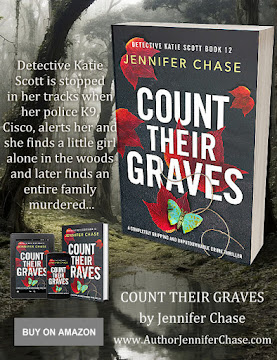















































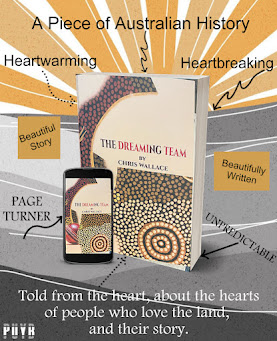




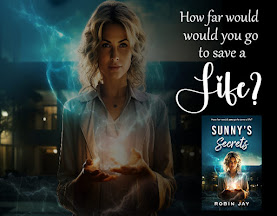















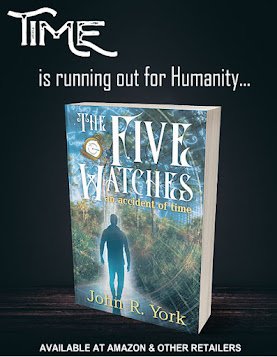























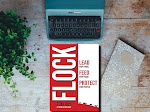


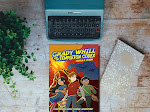







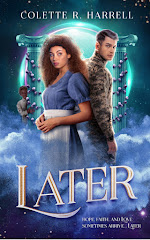
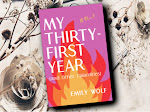



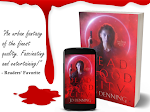


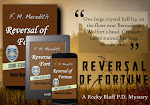









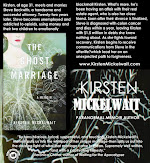

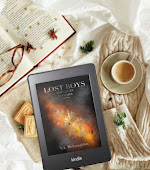




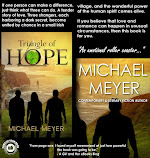
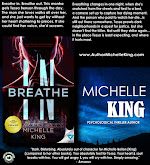
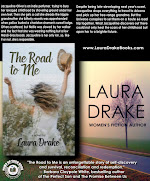


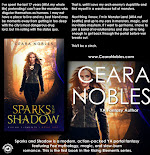
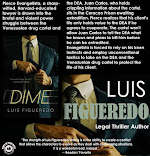







































Marvelous interview. Makes one hungry to read anything David Arthur writes..
ReplyDeleteAnne Collins